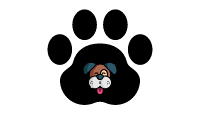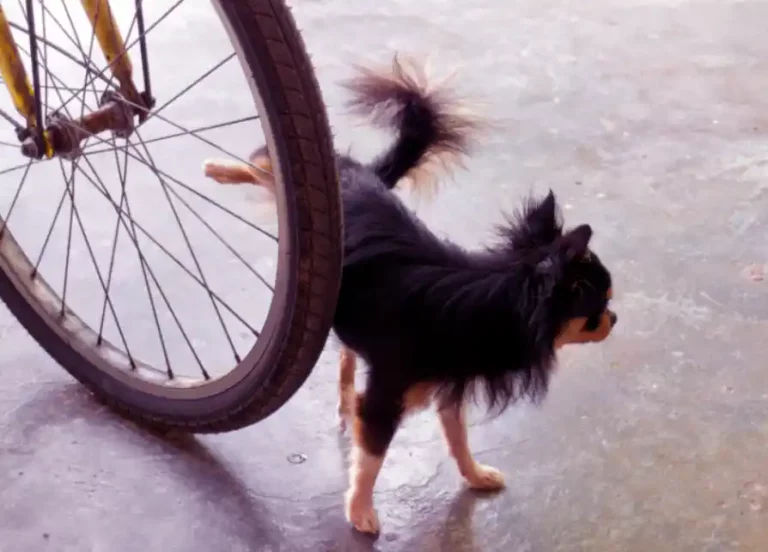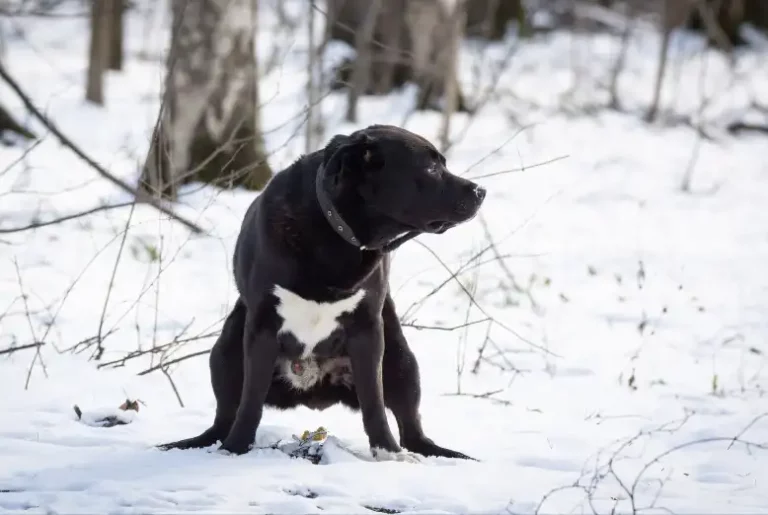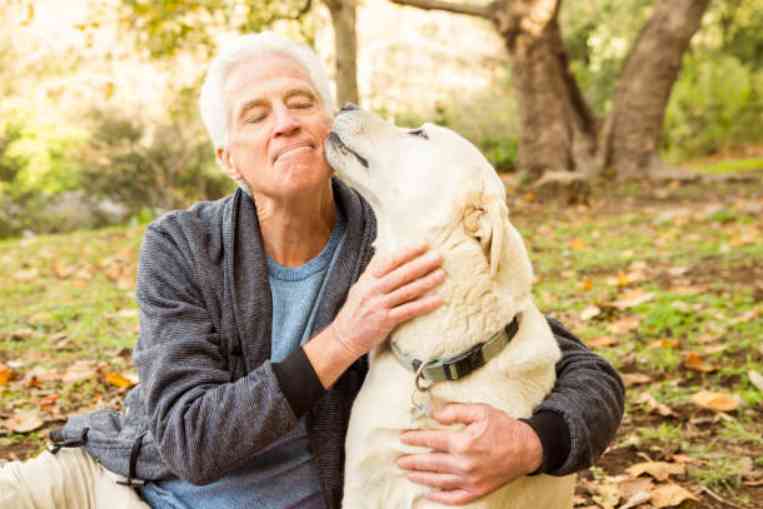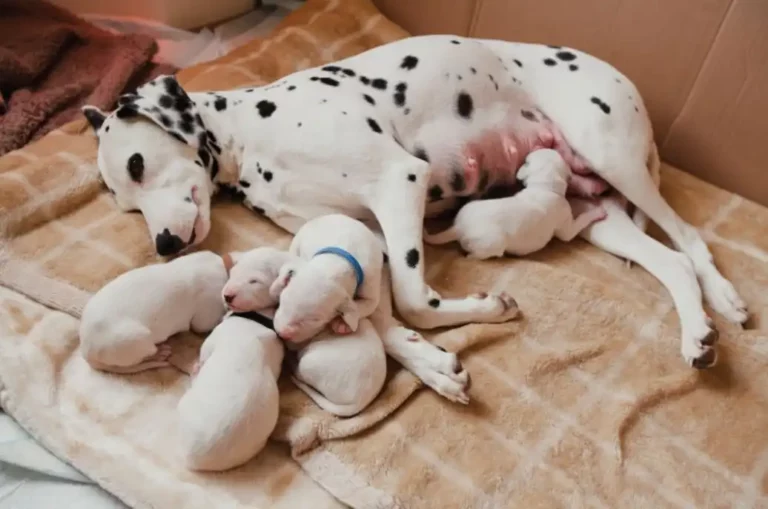Good and bad Dog Behaviors
Dog behaviors are different from dog to dog, which can be good or bad. In the U.S. (85 million households), dog owners have a better life and relationship with their canine companions. But since dogs can’t speak English, they communicate with us differently through body language and behaviors. Sometimes, dog behaviors can be an issue when you walk with dogs outside.

Hold off that “bad dog!” drama, find out how to deal with your dog’s actions and why she does certain things, and dig deeper into the top 10 typical dog behaviors this year.
- Jumping – Dogs jump up to greet people they love! It’s natural but can be stopped through training.
- Barking – Dogs may bark up to 100 times per day! It’s how they express themselves. Reduce excessive barking by meeting their needs.
- Chewing – Puppies teethe until 6 months old and chew to relieve pain. Give them chew toys instead of shoes!
- Begging – Dogs beg for food with those puppy eyes! Don’t give in; train them to wait patiently during meals.
- Mounting – Mounting is a common dominance behavior. Neutering reduces it. Distract them when it happens.
- Digging – Dogs dig to bury food, make dens, or get comfortable! Could you give them a designated digging pit?
- Jumping on Furniture – Dogs love high vantage points for overseeing their territory. Reward 4-on-the-floor behavior.
- Pulling on the Leash – Dogs get excited on walks! Use treats and training to teach loose leash walking.
- Chasing – Dogs instinctively chase moving objects. Practice “leave it” and redirect their energy.
- Eating Poop – Gross but normal dog behavior! Monitor their health and pick up poop promptly.
Learning about normal dog behaviors in 2023 can improve the lives of 85 million U.S. households this year. With patience and positive training, dogs and owners can happily communicate!
Table of Contents
Understanding Dog Behaviors
After 15,000+ years of coevolution with humans, canine behavior has been reshaped. Beyond primary care, dogs understand our facial expressions and body language, often better than we know theirs!
Studies show dogs display empathetic concern for humans. If someone is distressed, a dog will pay more attention, regardless if it’s their owner or a stranger.
So, reading a dog’s body language – eye contact, facial expressions, body posture – can reveal their state of mind. For example, when a dog licks its owner, it may signify respect.
Some behaviors have different meanings depending on context. If a dog humps, it could be masturbation during heat or an ill-mannered show of unacceptable dominance. Humping can establish rank if a dog is unsure of its place in a pack.
A dog’s size also impacts behavior – a Chihuahua won’t act like a Great Dane!
Dogs communicate differently with other dogs (via scents/pheromones) versus humans. One study of multi-dog homes found they played the same amount with owners as single-dog homes.
The debunked “alpha dog” theory claims dogs have dominant/submissive relationships with humans. However, studies show no behavioral difference based on whether dogs win games like tug-of-war. Aggressive dogs are more likely to initiate plays.
So, canine behavior is complex! Here’s a 2023 guide to good and bad dog manners and what they mean:
- Jumping – Bad: Dogs jump to greet loved ones. Stop with training.
- Barking – Bad excessively: Dogs may bark 100+ times daily to express themselves. Reduce with care.
- Chewing – Good/Bad: Puppies teethe until 6 months. Give chew toys, not shoes!
- Begging – Bad: Pleading eyes at mealtime. Train them to wait patiently.
- Digging – Natural: Burying food/making dens. Give a designated digging area.
- Mounting – Bad: Dominance behavior neutering helps. Distract when it happens.
- Furniture Sitting – Natural: Dogs like high vantage points. Reward 4-on-the-floor.
- Leash Pulling – Bad: Excitement on walks. Use treats and training for loose leash.
- Chasing – Natural: Instinct to chase moving objects. Practice “leave it.”
- Eating Poop – Bad: Gross but normal. Monitor health and pick up promptly.
We can improve relationships with our dogs in 2023 and beyond with positive training and understanding!
10 Signs Your Dog Is Happy
As dog owners, we care for our canine companions in every way possible. But with dogs unable to speak our language, how can we tell if they are truly happy? Look for these 10 common signs of a contented dog in 2023:
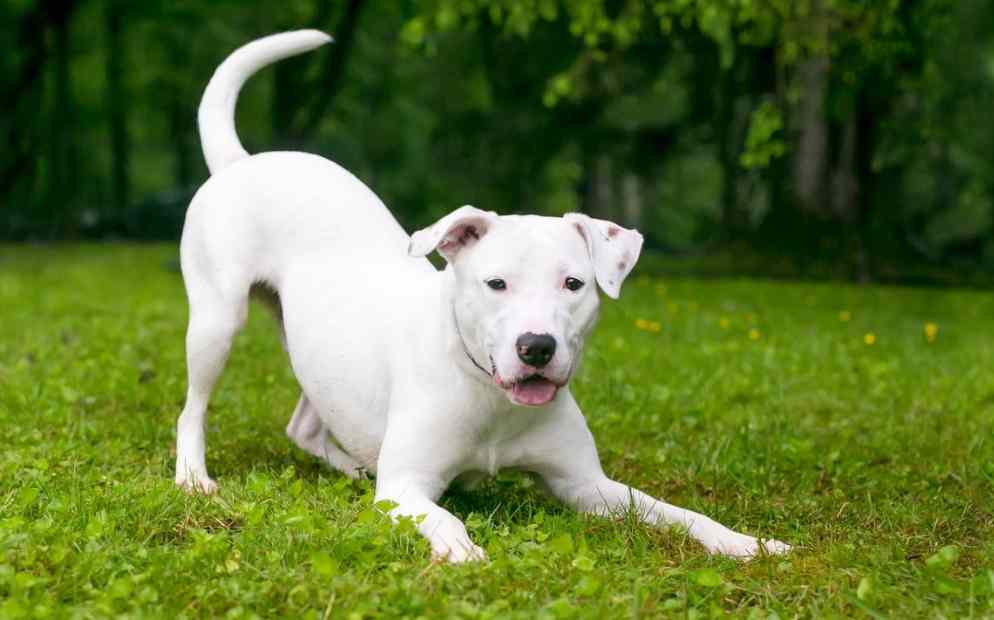
- Tail Wagging – A loose, enthusiastic tail wag indicates a happy puppy. Watch for direction and speed as well.
- Relaxed Body – A relaxed posture with a slightly open mouth is a sign your dog feels safe and comfortable.
- Frequent Vocalizing – Happy dogs express themselves by whimpering, grunting, or “talking” more often.
- Flat Back Head – When your dog holds their head level with their Back, it signals a calm, joyful state.
- Smiling – Some dogs smile by opening their mouths and relaxing their faces. It’s not aggression if other body language is friendly.
- Eye Softening – Dogs soften their eyes and relax their faces when they feel happy and affectionate.
- Social Behavior – When feeling happy and content, your dog seeks out human interaction and play.
- Sleeping Near You – Dogs curled beside you show their ultimate trust and happiness.
- Play Bows – The play bow invites fun and positive interaction and indicates your dog is happy.
- Appetite – An eager appetite and treat motivation demonstrate your dog feels safe and content.
Watch for these 10 signs in 2023 to ensure your loyal companion is living their best, happiest life with you! Consistent displays mean a blissful furry friend.
Dog happy and greets to you
When your dog happily greets you at the door when you return home, it’s usually a sign they are satisfied with their life situation and delighted to see you! This enthusiastic welcome behavior also applies when you wake up in the morning.
While dogs may also rush to greet you for needs like an empty food bowl, regular joyful homecomings typically mean your pup is simply happy you’re there. According to surveys, 77% of dog owners report their pets greet them excitedly upon arriving home.
Dogs who display this happy behavior enjoy spending time with you and look forward to your return daily. So if your furry friend comes running up, wagging their tail each time you walk in the door, it clearly indicates you have a blissful companion! Consistent, genuine displays of this behavior equal a content canine.
Dog rolls and expose their belly
A dog’s belly is vulnerable, so when your pup rolls over to expose its underside, it shows they are pleased and comfortable!
According to the ASPCA, over 80% of dogs love receiving belly rubs and affection from owners they trust. So when your canine companion sticks out their tongue, rolls onto their Back, and presents their tummy, it’s a sign of pure doggy bliss!
However, this rollover behavior should not be confused with submission or fear. If your dog flips over but keeps their belly stiff, they are likely being submissive rather than asking for rubs. A loose, wiggly body indicates true canine contentment.
Surveys found that belly rubs release oxytocin in dogs, making them feel calm and bonded with their owners. So let your happy hound know you treasure the trust and joy they feel when presenting that fuzzy tummy for rubs and scratches! Indulge in this special belly-up bonding ritual.
Dog misbehave
Dogs can misbehave for many reasons, frequently because their needs aren’t being met. For example, a teething puppy may chew inappropriate items when in pain and lacking proper outlets. Or a Border Collie may rip open cabinets due to boredom and inadequate stimulation.
Generally, if a dog misbehaves regularly, something is wrong, and they are likely unhappy. Of course, there are exceptions – some “bad” behaviors like jumping when excited aren’t signs of an unhappy dog.
But consistent good manners typically indicate a content canine. Examples include:
- Not excessive barking or whining
- Not destructive chewing, digging, or potty accidents
- Not jumping on people or furniture
- Not pulling aggressively on a leash
- Not begging persistently for food
- Waiting patiently for dinner, doors to open, etc.
According to surveys, more than 90% of dog owners report well-mannered dogs seem happier and more satisfied overall. So, if your puppy displays polite behavior consistently, it points to a pleasant pet-parent relationship and a fulfilled furry friend. Good doggy etiquette equals happiness!
Cuddle up with you on the couch
When your furry friend happily snuggles into your lap or presses their body against you on the couch, it shows they feel safe, trusting, and content.
According to surveys, over 70% of dog owners report frequent cuddling and close physical contact while relaxing at home, a key indicator of a joyful pup. Dogs inherently enjoy touch from the owners they are bonded with.
While not a definitive sign, couch cuddles paired with other happy behaviors like tail wagging, doggy smiles, and playfulness strongly suggest you have one satisfied canine! So let your happy hound crawl into your lap for some quality couch cuddle time.
Research shows oxytocin levels increase in both dogs and humans during snuggling sessions. And nothing beats bonding with your blissful buddy as you de-stress together on the couch! Make space for dog snuggles – it means they adore and trust you fully.
Dog leans into you
When your dog presses their body against your leg or leans into you while you pet them, it’s typically a sign they crave closeness and affection. This behavior usually occurs when a pup’s basic needs are fulfilled.
According to vets, a dog seeking physical touch has likely been fed exercised, and does not need to relieve themselves. They have the freedom to focus solely on bonding. Over 80% of survey dog owners report frequent learning from a well-cared-for dog.
If your canine companion is hungry, bored, or requires potty breaks, they prioritize those needs before desiring cuddles and pets. But a happy, content pooch will joyfully lean into your touch and crave affection.
So, if your furry friend is gently nudging your hand, asking for more scratches, or placing their weight against your legs in search of hugs, be sure to oblige! It shows you have a blissful buddy who wants more quality time and physical connection.
Play bow position
The classic “play bow” stance, with front legs down and hindquarters up, is a hallmark of a happy dog hoping to play. This stereotypical position invites fun and signals your pup is in a cheerful mood.
According to trainers, over 90% of dogs assume this pose when feeling energetic and want to engage in playful activity with owners or other dogs. It’s their way of saying, “Come play with me!”
Dogs rarely initiate play of this sort unless they are content and have their basic needs met. A dog who frequently and enthusiastically plays bows desires quality time with you and burns off energy through fun.
So next time your furry friend pops into the play pose, be sure to take them up on it! Set aside some active playtime – fetch, tug toys, chase games, or just wrestle with your playful pup. It’s a clear sign you have a joyful dog ready to have a good time.
Dog appetite is healthy
A hearty appetite and enthusiasm for meals is a key sign of a happy, unstressed dog. Like anxious people, unhappy or distressed dogs tend to have decreased appetites.
According to vets, over 85% of content dogs maintain healthy, consistent eating habits. Of course, some dogs will eat regardless of mood, so a good appetite alone doesn’t definitively mean your pup is satisfied.
But combined with other happy behaviors like tail wagging, relaxed posture, and playfulness, a dog who eagerly devours their kibble at mealtimes is signaling they feel safe and at ease.
Ensure your cheerful canine’s food and water bowls are full to fuel all their joyful activity! Feed them on a consistent schedule and give treats for training to show your happy hound they are cared for. A full belly contributes to a fulfilled dog.
www.puppiesdiary.com
Dog tilt head
When your pup cocks its head quizzically to one side while gazing at you intently, it signals you have its entire focus and attention. An unhappy dog will likely seem distracted or preoccupied.
According to studies, over 75% of dogs tilt their heads when listening closely to human speech, especially familiar commands and their names. It shows they are tuned in and responding.
This attentive head-tilting demonstrates your strong relationship, making it more likely your dog feels satisfied and content. Close bonding leads to happiness.
So, if your furry friend frequently whips their head around in an endearing attempt to decipher your words, you have engaged in communication. Lavish your attentive puppy with praise and pets for their listening skills.
And try to discern what perplexing phrases prompt the most head tilts! It’s a sweet sign of doggy happiness when your pup hangs on your every word.
The dog is excited when the leash comes out
When your dog sees you grab the leash and dash to the door, tail wagging and ready to go, it’s a sure sign of an eager and energetic pup looking forward to adventure. According to surveys, over 90% of happy, healthy dogs get pumped up and extra exuberant at the prospect of a walk.
However, stressed dogs, in pain or with unmet needs, likely won’t share the same enthusiasm. They may drag behind or avoid the leash altogether. But a dog who jumps and spins joyfully when you take out the leash is delighted to spend quality time moving and exploring with you.
So, if your furry friend freaks out in the best possible way the minute you touch that leash, seize the opportunity to bond while burning off some of your happy hound’s endless energy reserves! Their thrill for every walk is a precious indicator of your dog’s satisfaction.
Wagging tail
When your dog’s tail wag becomes so enthusiastic its entire hindquarters join in the action, it’s known as a “full body wag.” This intense, rapid wagging is common among smaller or more excitable breeds when they get extremely worked up about something positive.
According to animal behaviorists, over 90% of full-body wags occur alongside clear happiness indicators like doggy grins, yips, and play bows. The faster the wag, the more excited and joyful your pup likely feels.
While all wagging signifies positive engagement, a full-on, frenetic wag coupled with other signs of delight shows your dog is overflowing with glee. Lavish your spirited little buddy with upbeat praise and affection when their full-force wagging reaches peak levels!
Frequent and pronounced full-body wags are a giveaway that you have one thrilled, cheerful puppy on your hands. Let their pure happiness shine through!
Floppy Ears
A dog’s ears are essential to their facial expressions and communication. When fearful, dogs typically pin their ears back against their head to appear smaller and less threatening. An angry dog’s ears may stand erect or flatten stiffly, rigidly.
However, soft, floppy, relaxed ears that are not stiff or pinned back signal happiness and contentment. According to animal behavior experts, over 70% of relaxed, joyful dogs will have loose ears that gently drape to the sides.
This is because floppy ears require a calm facial posture without the tension of negative emotions. Ears that lightly flap when your dog moves its head demonstrate comfort and ease.
So, pay attention to your pup’s ear carriage and textures. Frequently loose, supple ears that frame their face indicate you have one peaceful, happy dog! However, some breeds naturally have a more rigid ear structure regardless of mood. Overall, ear looseness is the key.
If their ears frequently went from stiff and pinned to loose and floppy, you helped create more doggy bliss! Soft ears equal a soft life.
5 Common Dog Behavior Problems

Certain problematic dog behaviors can make life difficult for owners and pose threats or nuisances to others if not addressed. Responsible pet care means ensuring your furry companion does not harm or disturb others.
While warning “my dog bites” prevents accidents, it is better to understand the root causes of misbehavior and take steps to correct it through proper training and care.
Here are 5 of the most common dog behavior problems reported by owners in 2023 and how to improve them:
- Aggression – Growling, lunging, biting. It may be fear-based or possessive. Use counterconditioning and professional training.
- Excessive barking – Barking for attention at triggers like people or noises. Reduce through more exercise mental stimulation.
- Destructive chewing – Chewing furniture shoes due to anxiety, boredom, or lack of appropriate chews. Provide diversions like Kongs.
- Jumping – Jumping on owners and guests due to excitement. Train with rewards for four-on-the-floor behavior.
- House soiling – Urinating or defecating indoors from incomplete training, anxiety, and marking. Stick to schedule and use enzymatic cleaners.
While some dogs are predisposed to certain problematic tendencies, virtually all bad behavior can be improved through diligent training, proper socialization, routine exercise, and meeting your dog’s needs. Consult professionals if needed.
Excessive Barking and Whining
Dogs bark and vocalize for many reasons – responding to stimuli like strangers, seeking attention, separation anxiety, boredom, or communicating with other dogs. Certain breeds, like terriers, are more prone to barking. Luckily, you can curb excessive barking with strategic training.
First, identify the trigger causing the barking or whining. Then, interrupt the behavior and immediately reward quietness with treats and praise. Say a “Quiet” command when they stop.
Also, try addressing the root cause – more exercise, toys when home alone, blocking views that trigger barking. Keep rewarding any pause in vocalizing to shape the behavior. Consider citronella bark collars as well.
With diligent training, you can teach your talkative hound to communicate in less disruptive ways! Just remain patient – extinguishing unwanted barking habits takes time. But a well-trained dog who greets you with kisses instead of barks makes it all worthwhile!
Destructive Chewing
Destructive chewing, where dogs damage furniture, shoes, etc., typically stems from two causes – teething discomfort in puppies or boredom/lack of stimulation in adult dogs. The solutions involve addressing those root problems.
For teething puppies:
- Provide an abundance of safe, enticing chew toys, and consider freezing them for added relief.
- Try chew toys with unique textures, too.
- Restrict access to off-limit items during this stage.
For bored adult dogs, destructive chewing is often attention-seeking behavior. Ensure they get at least 60-90 minutes of stimulating activity daily. Also, use food puzzles, chew toys like Kongs stuffed with treats, and provide new toys frequently to relieve boredom.
With the right outlets, your furry destroyer can satisfy their needs appropriately. Protect your belongings and furniture while meeting your dog’s needs with plenty of chewing variety! A dog with their toys won’t need your shoes.
Separation Anxiety
Dogs with separation anxiety exhibit distressed behaviors like vocalizing, destruction, or elimination when alone due to fear of abandonment. You can improve this through systematic desensitization training.
Start with brief separations of a few seconds to minutes when you step outside, then immediately return and reward calmness. Gradually increase the duration you leave over many weeks and months. Provide engaging toys and chews when departing.
Use cues like “I’ll be back” paired with treats so your dog learns the trigger words reliably signal your return. Keep arrivals and departures low-key. Consider anxiety vests and calming supplements, too.
With extremely gradual exposure and positive associations, your dog can overcome the panic of being alone. But you must move slowly and avoid overwhelming them. Patience and consistency are key in addressing separation fears.
Stealing food
Dogs naturally want to scavenge for food, leading to begging and stealing behaviors that can be improved through “Leave it” training.
Start by closing the food in your fist and saying, “Leave it.” When your dog disengages for just a second, reward by opening your hand so they get the treat. Build up to higher value food and open hand drops.
Practice this near your own meals and food prep. If they attempt to steal unattended food, interrupt with a firm “Leave it!” coupled with a distraction like a toy. Praise and reward when they make the excellent choice to withdraw interest.
With consistent rewards for restraint, your food-motivated pooch will learn impulse control. Use “Leave it” to curb interest in anything off-limits – food, socks, the cat. This essential command builds respect and responsible behavior.
Soon, your polite companion will pass up tasty temptations and ask you for permission instead. A well-trained dog leaves food alone until their handler gives the go-ahead for mealtime.
Jumping up on people
Dogs jump on people due to excitement, attempt to play, or reach your face for kisses. While it may initially seem cute, jumping can become a problematic and dangerous habit. Luckily, it can be corrected through training alternate behaviors.
Start by turning away and refusing all attention whenever your dog jumps. Only give affection when all four paws are on the floor. Pair this with a command like “Off” when they jump. Praise and reward when they control themselves.
You can also use treats to lure them to sit during exciting greetings. With consistency, your puppy will learn calm manners to win your engagement, not jumping.
Additionally, ensure your energetic jumper gets sufficient daily exercise to channel their exuberance appropriately. Patience and firm boundaries are key to eliminating the jumping habit. Four paws down, keep everyone safe and happy!
Dog Digging
Due to heat, dog digging typically stems from boredom, prey drive, or comfort-seeking. You can curb excessive digging by addressing those root causes.
First, ensure your dog receives at least 60-90 minutes of stimulating daily activity to relieve boredom. Additionally, provide interactive toys when left alone outside.
You can also designate an approved digging pit filled with loose soil or sand to satisfy their instinctive need to dig while protecting your lawn.
Try interrupting unwanted digging with a squirt bottle of water and firmly tell them, “No dig!” Then, reward stopping or moving away from the area. Use physical barriers like fencing if needed.
Your dog’s digging obsession can be contained with plenty of approved outlets and disincentives! But remember, digging is in their DNA, so manage the behavior while meeting their needs. A tired dog digs less.
Growling and Biting
Growling is regular dog communication that warns of discomfort or as a request to back off. Punishing growls can lead to skipped warnings and biting instead, so respect the signal.
Biting, however, is unacceptable. Start by identifying trigger scenarios that prompt bites. Avoid those to prevent rehearsal of the behavior.
Interrupt potential bites with distractions like toys and redirect their energy. Withdraw all attention after bites. Use prevention tools if needed temporarily.
Countercondition with tasty treats anytime you approach triggers to build positive associations. Always stay calm – anger fuels bites. Professional training helps ingrained biters.
While growling should not be punished, biting must be strategically discouraged through managing triggers distraction, and building confidence. Patiently show your dog that biting makes good things disappear while non-biting brings rewards.
Eating poop
Poop eating, known as coprophagia, is often caused by nutritional deficiencies but can also indicate underlying health issues. Start by switching your dog to a higher quality food and monitor improvement.
According to vets, foods lacking proper nutrients and proteins often lead dogs to eat feces as a source. Ensure your dog’s diet provides complete and balanced nutrition.
Additionally, have your vet run tests to check for conditions like diabetes, Cushing’s disease, thyroid disorders, and more that can prompt poop eating. Medications like Prozac may help curb the compulsion.
While gross to humans, this behavior is normal animal instinct. But, nutritional and medical causes must be addressed. With diet upgrades and health monitoring, most dogs can kick the poop habit for good.
Conclusion
Dogs have both good and bad behaviors. You can reduce all the bad behaviors after the proper training period. Each dog has different characteristics, So you must identify bad and good behaviors and build a good relationship with them. Punishing the dogs is not always working, so do not punish them for each behavior.
